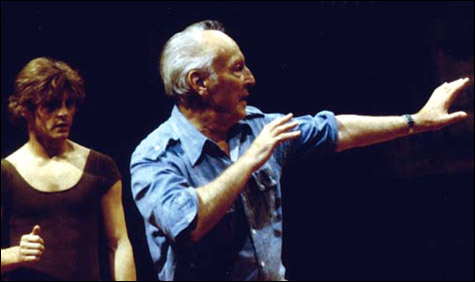Nancy Goldner on Mr. B

DECEPTIVELY READABLE: Just because Goldner makes Mr. B seem transparent doesn’t mean her book isn’t sophisticated.
|
|
Balanchine Variations
| by Nancy Goldner | University Press of Florida | 144 pages | $24.95
|
Nancy Goldner’s diminutive new book about George Balanchine’s choreography is deceptively readable. Goldner, who’s reviewed dance regularly for the Christian Science Monitor, the Nation, and the Philadelphia Inquirer, writes in an almost conversational voice that makes Balanchine seem transparent, easy to understand. But the simple appearance of the text belies an astute and highly sophisticated observer.
Goldner is a lifelong New Yorker, a devotee of New York City Ballet. Her gem of a book on NYCB’s 1972 Stravinsky Festival serves as both memento and sourcebook for that remarkable event. Balanchine Variations revisits some of the Stravinsky successes of 1972, along with 18 other ballets, from the 1928 Apollo to Ballo della Regina of 1978. The essays are based on a series of lectures Goldner has given over the past decade, along with former NYCB principal dancer Merrill Ashley, under the auspices of the Balanchine Trust and the Balanchine Foundation.
Preserving their original intent as a kind of primer for balletgoers, the essays also constitute a lesson in how many ways there are to write about ballet. None of the chapters adopts a “critique” or review format, yet almost every ballet summons a different treatment, suggests a different focus. This demonstrates the versatility of Balanchine, but also the ingenuity of Goldner.
Sometimes her approach is historical. She traces the evolution of Serenade, Balanchine’s first ballet in America, with a capsule history of changes and revisions in the choreography over nearly 75 years. A committed balletomane, she amuses herself by looking at a video of Concerto Barocco several times to see whether she can catch Balanchine in “a sag, or error in judgment”; she concludes that the ballet is perfect.
She asks questions, sees mysteries, speculates about things that don’t reveal themselves on the surface in the strange, semi-narrative La Sonnambula. She explores Balanchine’s brand of Americana in Western Symphony, then decides that attitudes and gestures, like the cowboys doffing their hats, aren’t what really define the choreographer’s Americanism. Instead, Concerto Barocco, The Four Temperaments, and the Stravinsky ballets are better indicators of his affinity for jazz, “the one uniquely American thing to which Balanchine was drawn.”
In a casual remark long ago, Nancy Goldner taught me a profound lesson. “Ballet is about steps after all,” she said, as if any numbskull would know that. Of course, most of the world still doesn’t, and the audience gets very little exposure to this resource from today’s trendy repertory. To Goldner, Balanchine’s games with footwork supply enduring pleasure.
It’s easy to think of Agon as a precursor of the sexy athletics of modern choreography. Goldner ignores this cliché and explores the 1957 classic in terms of the many ways Balanchine employed the canon and the tension this simple repeat-after-me trope can create in the stage action and the viewer. She doesn’t like Donizetti Variations all that much, but she appreciates the “number play” with which Balanchine parsed his 11 dancers.
Because it identifies a particular group of works from the choreographer’s enormous output, Balanchine Variations has canonical overtones. As a “best of Mr. B” list, the book will no doubt be read as a key to the master’s genius. But Goldner’s lectures were arranged to supplement revivals of Balanchine works around the country, a gradually shrinking repertory of audience favorites like Serenade and Rubies. She does expand sideways a little, by glancing at related works, but you could easily add another 20 brilliant ballets that deserve her analysis. Dare we hope for a bigger, deeper book?